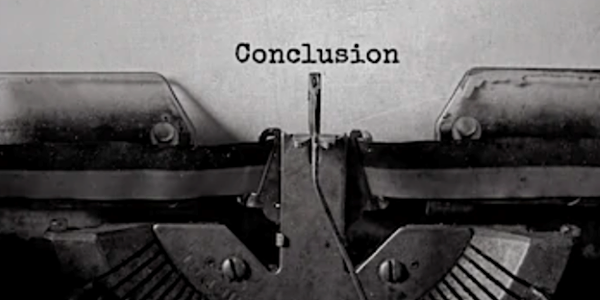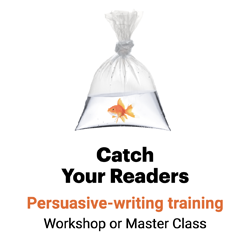Leave a lasting impression with these 2 key elements
It’s easy to end an inverted-pyramid story: Stop typing.

Sadly, coming to an abrupt halt doesn’t work for feature-style stories.
But what does?
To write a satisfying conclusion, include two elements:
- A wrapup: Tell ’em what you told ’em.
- A kicker: End with a bang.
The wrapup is designed to make your point; the kicker, to make your point memorable. The best conclusions, in conclusion, summarize then illustrate your key point.
1. Draw to a close in the wrapup.
You’ve heard the phrase: Tell ’em what you’re going to tell ’em, tell ’em, then tell ’em what you’ve told ’em.
Let’s pause and ponder that for a minute too.
- The nut graph is where you tell ’em what you’re going to tell ’em.
- The body paragraphs are where you tell ’em.
- And the wrapup is where you tell ’em what you’ve told ’em.
Start your conclusion with a wrapup. This is where you make your final point about the subject.
You remember learning to do this for high school research papers: To write an essay conclusion, restate your thesis statement. Then the teacher reading your paper knew what your point was.
To write a wrapup, simply copy and paste the nut graph, then massage. The tone of the wrapup is, “Now that I’ve given you all this information, you can only agree with me that [key point].”
If you have a call to action, that goes into the nut graph, too.
Here’s how it works, in a story by Caren at the Workers Compensation Board-Alberta.
[Nut graph] Good opioid claim management can literally save an injured worker’s life, but it isn’t easy. Here’s what you can do for your injured worker to help keep them, and you, on course.
…
[Wrapup] Solid opioid claim management prevents addiction and overdoses and in essence, can save a claimant’s life.
2. End with a bang in the kicker.
The job of the kicker is to leave a lasting impression. Where the lead — aka introductory paragraph or essay hook — draws readers in with concrete, creative, provocative details, the kicker uses the same approaches to let readers go.
So make your kicker, or conclusion paragraph:
- Concrete. Choose a telling detail for the end of the piece. It should reveal new meaning about the topic, even as you close.
- Creative. Steal techniques from fiction writers including anecdotes, metaphors, wordplay, human interest and juicy details.
- Provocative. Provoke a question in the reader’s mind so she keeps thinking about your story long after she’s finished the last paragraph.
You might even consider coming full circle back to the beginning.
Here’s how it works, in Caren’s story:
[Nut graph] Good opioid claim management can literally save an injured worker’s life, but it isn’t easy. Here’s what you can do for your injured worker to help keep them, and you, on course.
…
[Wrapup] Solid opioid claim management prevents addiction and overdoses and in essence, can save a claimant’s life.
[Kicker] By following these steps, you can help your claimant avoid becoming an unfortunate statistic.
Leave a lasting impression.
First impressions are important. But last impressions matter, too.
End with a bang, instead of a whimper, with this two-part approach.

Leave a Reply